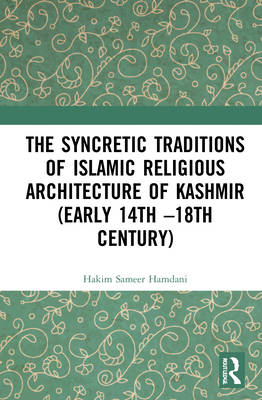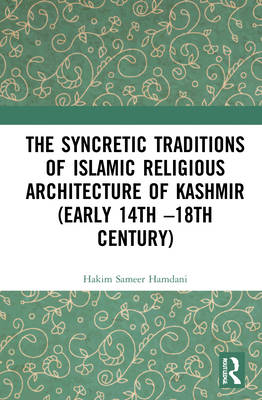
- Afhalen na 1 uur in een winkel met voorraad
- Gratis thuislevering in België vanaf € 30
- Ruim aanbod met 7 miljoen producten
- Afhalen na 1 uur in een winkel met voorraad
- Gratis thuislevering in België vanaf € 30
- Ruim aanbod met 7 miljoen producten
The Syncretic Traditions of Islamic Religious Architecture of Kashmir (Early 14th -18th Century)
Hakim Sameer HamdaniOmschrijving
This book traces the historical identity of Kashmir within the context of Islamic religious architecture between early fourteenth and mid-eighteenth century. It presents a framework of syncretism within which the understanding of this architectural tradition acquires new dimensions and possibilities in the region. In a first, the volume provides a detailed overview of the origin and development of Islamic sacred architecture while contextualizing it within the history of Islam in Kashmir. Covering the entirety of Muslim rule in the region, the book throws light on Islamic religious architecture introduced with the establishment of the Muslim Sultanate in the early fourteenth century, and focuses on both monumental and vernacular architecture. It examines the establishment of new styles in architecture, including ideas, materials and crafts introduced by non-Kashmiri missionaries in the late-fourteenth to fifteenth century. Further, it discusses how the Mughals viewed Kashmir and embellished the land with their architectural undertakings, coupled with encounters between Kashmir's native culture, with its identity and influences introduced by Sufis arriving from the medieval Persianate world. The book also highlights the transition of the traditional architecture to a pan-Islamic image in the post-Independence period.
With its rich illustrations, photographs and drawings, this book will interest students, researchers, and professionals in architecture studies, cultural and heritage studies, visual and art history, religion, Islamic studies and South Asian studies. It will also be useful to professional architecture institutes, public libraries, museums, cultural and heritage bodies as well as the general reader interested in the architectural and cultural history of South Asia.
Specificaties
Betrokkenen
- Auteur(s):
- Uitgeverij:
Inhoud
- Aantal bladzijden:
- 240
- Taal:
- Engels
Eigenschappen
- Productcode (EAN):
- 9780367550097
- Verschijningsdatum:
- 30/03/2021
- Uitvoering:
- Hardcover
- Formaat:
- Genaaid
- Afmetingen:
- 156 mm x 233 mm
- Gewicht:
- 543 g

Alleen bij Standaard Boekhandel
Beoordelingen
We publiceren alleen reviews die voldoen aan de voorwaarden voor reviews. Bekijk onze voorwaarden voor reviews.











